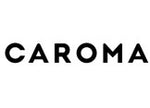It would be wonderful for our bathrooms to remain shine and grime-free, but in reality, that’s not always the case. Bathrooms are a frequently used space and are bound to get dirty real fast if not cleaned properly or as often as they should be.
If you’ve become complacent in your cleaning routine, then you may have noticed a build-up of bacteria growing in and around your shower, or perhaps you’ve noticed the grout has become a sight for sore eyes. Yikes! Either way, both are unpleasant. This is why regular cleaning is important, as it is hygienic.
Now, you don’t have to be ‘Sadie the Cleaning Lady’ to know all the ins and outs of cleaning (or find enjoyment in it, for that matter). However, we hope the following recommendations on how to best clean your bathroom will help turn it into a sparkling oasis.













